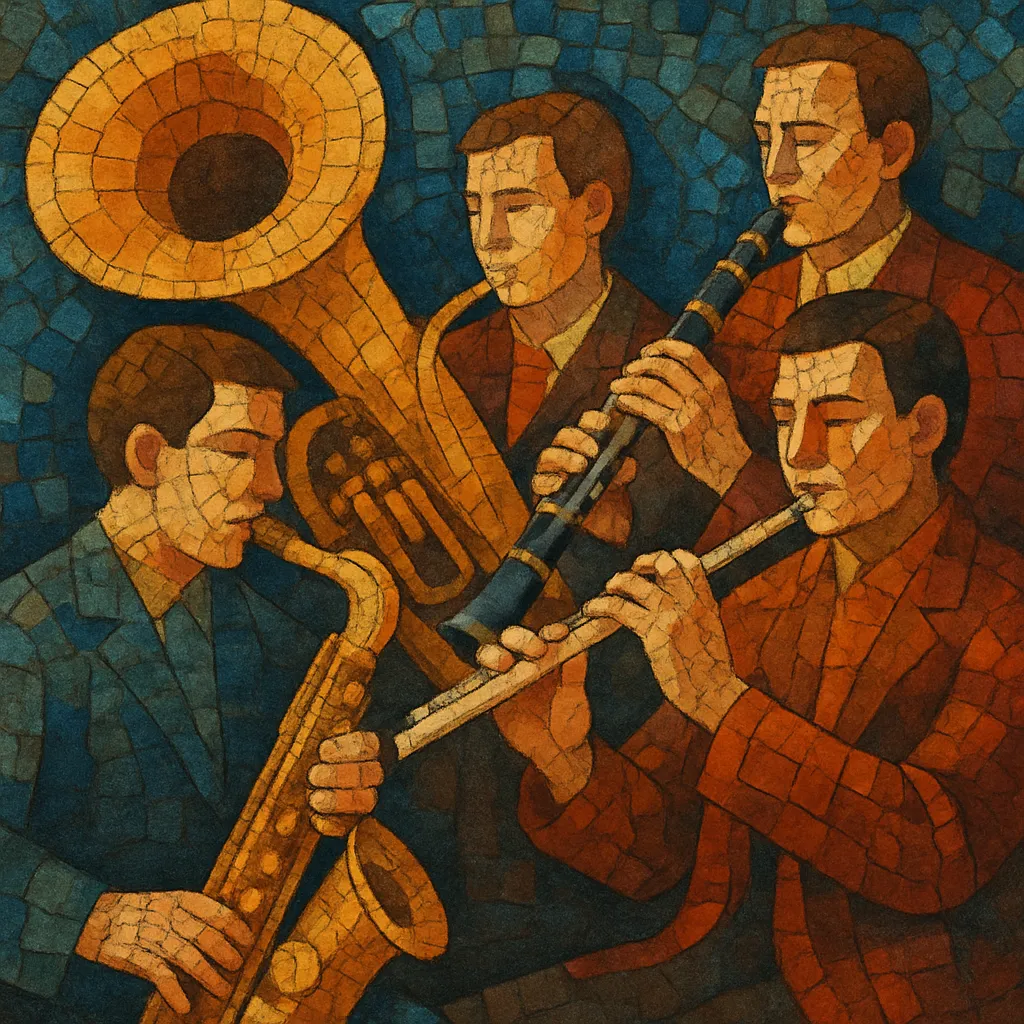Concert band refers to the symphonic wind ensemble tradition that performs concert music for woodwinds, brass, and percussion, sometimes augmented by double bass, harp, piano, and other color instruments.
Unlike marching bands, concert bands are designed for seated indoor performance with nuanced dynamics, refined balance, and a wide stylistic range—from ceremonial marches and overtures to suites, tone poems, and contemporary works.
Over the 20th century the repertoire expanded beyond transcriptions of orchestral music to a large body of original works by major composers, establishing the concert band as a distinct and sophisticated medium with its own idioms, colors, and performance practices.
Concert bands grew out of European and American military and civic band traditions in the 1800s. As brass manufacturing improved and wind pedagogy matured, town and regimental bands increasingly presented indoor concerts, not just outdoor parades. Early programming mixed popular tunes, operatic transcriptions, and marches, laying the foundation for a seated “concert” wind ensemble.
In the United States, virtuoso touring ensembles such as John Philip Sousa’s band popularized high-level wind performance and helped codify the American march style. In the United Kingdom, composers including Gustav Holst (First Suite in E♭, 1909; Second Suite in F, 1911) and Ralph Vaughan Williams (English Folk Song Suite, 1923; Toccata Marziale, 1924) wrote seminal original works that defined the medium’s symphonic potential. Percy Grainger’s idiomatic scoring and folk-inspired language further expanded coloristic possibilities.
Post-war school and university band programs in the United States created a vast ecosystem of ensembles. Frederick Fennell’s founding of the Eastman Wind Ensemble in 1952 promoted the flexible “one player per part” concept and transparent textures, influencing scoring norms worldwide. Composers such as Alfred Reed, Clifton Williams, Morton Gould, and Paul Hindemith (Symphony in B♭, 1951) contributed cornerstone works, while high-quality transcriptions coexisted with a growing catalog of originals.
The concert band tradition flourished internationally, notably in Japan and Europe, aided by competitions, recordings, and publisher networks. New voices—David Maslanka, Frank Ticheli, Eric Whitacre, Julie Giroux, Viet Cuong, and others—introduced post-minimal, neo-romantic, and color-forward approaches, frequent mixed meters, and expanded percussion. Contemporary bands often incorporate electronics, world influences, and multimedia, while still honoring core forms such as the march, suite, and overture.
Write for woodwinds (piccolo, flutes, oboes/English horn, bassoons/contrabassoon, B♭/E♭ clarinets, bass/contra clarinets, alto/tenor/baritone saxophones), brass (trumpets/cornets, horns, trombones, euphoniums, tubas), and a full percussion battery (timpani, mallets, snare, bass drum, cymbals, auxiliary). Optional colors include piano, harp, celesta, double bass, and occasional solo instruments. Score order typically follows woodwinds, brass, then percussion, with string bass and keyboards near the end.
Think in choirs (woodwind, brass, mixed) and SATB-like layers. Use clarinets and horns to bind choirs; saxophones to warm midrange; flutes/oboes for brilliance and lyric lines; euphoniums for cantabile tenor roles; tubas and contrabass clarinets for foundational weight. Exploit antiphony (brass vs. woodwinds), soli passages, and color-doubling (e.g., clarinet + alto sax for a rich unison) to achieve balance and clarity.
Common forms include march, overture, suite, theme and variations, and tone poem. Harmonic languages range from tonal/neo-romantic and modal (Dorian, Mixolydian) to quartal, pandiatonic, or mild post-tonal palettes. Favor clear cadential goals and orchestrational climaxes rather than heavy string-based sustain; use staggered breathing and dovetailing to maintain lines.
Rhythmic identities span traditional duple/triple meters to mixed meters and asymmetry (e.g., 5/8, 7/8). Percussion is pivotal for color and articulation—reserve battery for rhythmic drive and deploy mallets (glockenspiel, vibraphone, marimba) for shimmer and harmonic support. Timpani should outline structural bass tones and pivots.
Mind transpositions and ranges; give breathing space and phrase marks. Use dynamic terracing and clear articulation (marcato vs. legato) to project. When writing marches, establish a crisp 2/4 or cut time feel, clear bass lines, trio key change, and tasteful countermelodies. For contemporary works, consider layered ostinati, transparent spacing (one player per part where desired), and timbral development over time.
Score for clarity: avoid over-thick doublings; spotlight melody with supportive counterlines; balance cymbal and bass drum impacts with brass peaks. Provide detailed cues and percussion assignments to streamline rehearsal.


